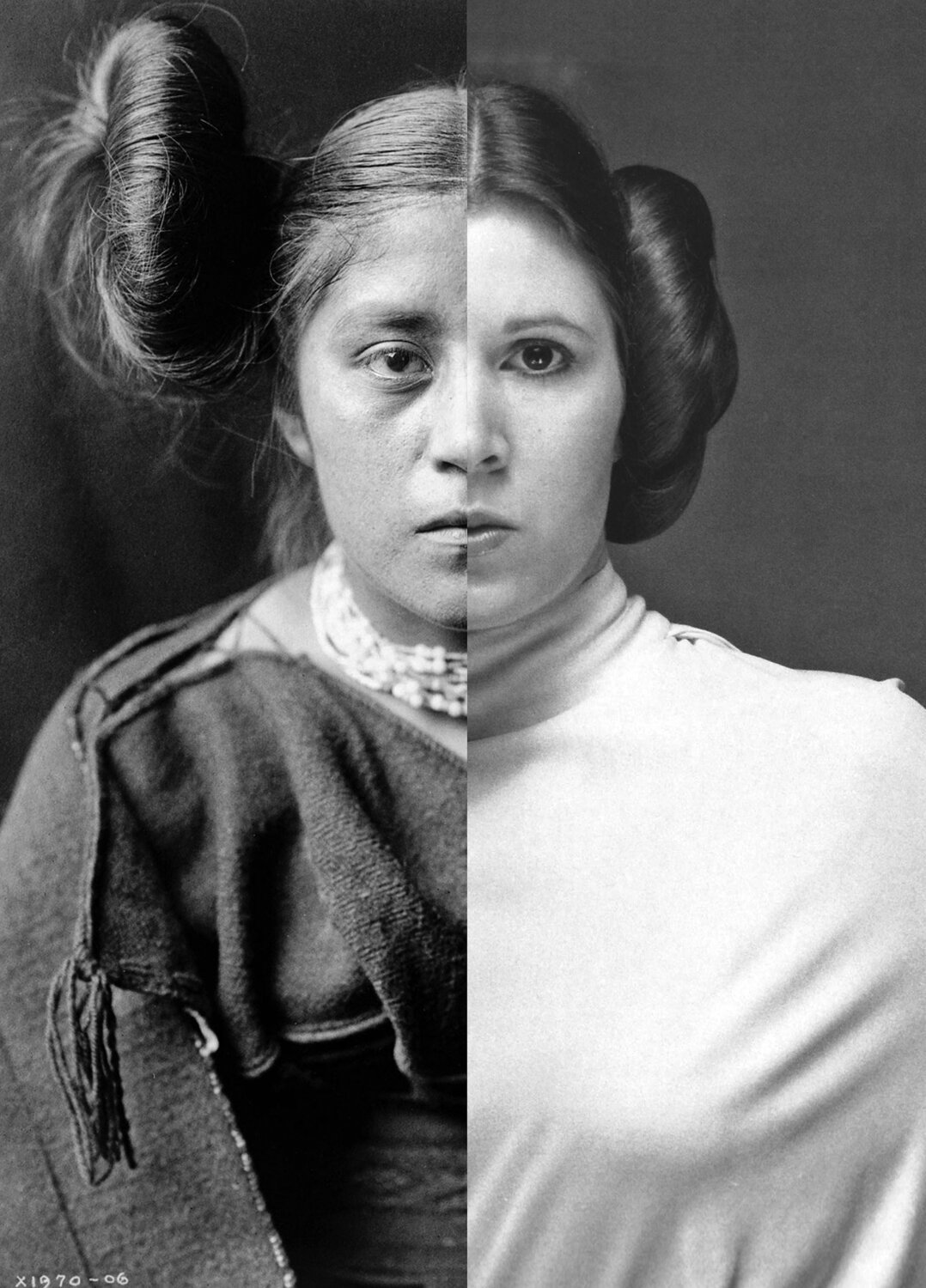Self with Brenda J. Child
I have been fortunate enough the past few days to study with Brenda J. Child (Ojibwe ancestry and Northrop Professor of American Studies at University of Minnesota). Sponsored by the Gilder Lehrman Institute, our course was titled American Indian History Since 1890. Child paid especial attention to physical objects and what they can illuminate about the past. Our assignment was thus to find an object (preferably not document) and write about its history and what it can explain about the past. (We were supposed to write in the style of a museum exhibit label.)
I chose a piece of art by Nicholas Galanin that I had used in class before, but I had never done much more than analyze it as a piece of art. I knew little about the artist or the history that he references in the art. Learning more about Galanin and his intentions was fascinating, and I am glad to share the results. Below you can find both Galanin’s piece and also my “museum writeup.” Cheers!
*** *** ***
Galanin, “Things Are Looking Native, Native's Looking Whiter” (2012)
Nicholas Galanin (b. 1979) is an artist of Tlingit and Unangax̂ ancestry whose work confronts colonial violence while exploring understandings of indigeneity, particularly autonomy and agency. For the giclee print “Things are Looking Native, Native’s Looking Whiter,” Galanin juxtaposes source material from a 1906 photograph of a Hopi-Tewa woman by Edward Curtis with a 1977 image of Carrie Fisher playing the character Princess Leia from Star Wars.
While Princess Leia is widely recognized in United States culture, Curtis is less well known. Called the “Shadow Catcher” by many Natives because of his photographs, Edward Curtis snapped more than 40,000 images during his career and recorded ethnographic information from over eighty American Indian tribal groups, photographing well-known Native figures like Geronimo and Chief Joseph. Ethnographers have found Curtis’s work to be a treasure trove of information on Native peoples essentially unduplicated anywhere else because he went to a number of remote locations and described Native life in great detail. Yet Galanin countered, "[Curtis’s] work was stereotyping and romanticizing the Indigenous people, building this idea of a culture that's vanishing, which it isn't — I'm still here and I'm still doing work. He perpetuated these false ideas of purity and mystery.”
“Things Are Looking Native, Native's Looking Whiter” thus makes effective commentary on Native identity, femininity, and beauty. During the late 1970s and 1980s, Carrie Fisher’s Princess Leia was often regarded as the height of female grace and beauty and held up as a paragon of female sexuality. The inherent comparison in Galanin’s print causes the viewer to examine their own biases and preconceptions. The two women have remarkably similar facial features and hairstyles, but whereas Fisher’s hair was intended to make her look alien and “other,” the unnamed woman’s squash blossom hairstyle is more natural and representative of her Native culture.
Galanin implicitly asks his audience to question why they accept Fisher’s Leia as an exemplar of female beauty but likely have not had the same thoughts about Native women. No matter what, the piece challenges our preconceived notions of Indigenous cultural autonomy and value, demonstrating the distinctly ethnocentric beauty standards that permeate modern society. For a similar artist, see Andy Everson (b. 1972), of K’ómoks and Kwakwa̱ka̱'wakw ancestry. Everson has taken images of Imperial figures from the Star Wars universe and adorned them with images of Native resistance.
Sources

